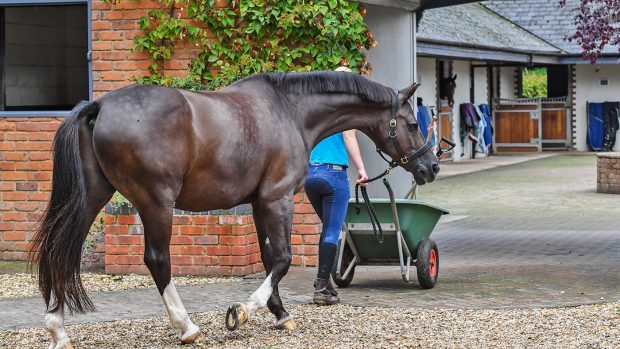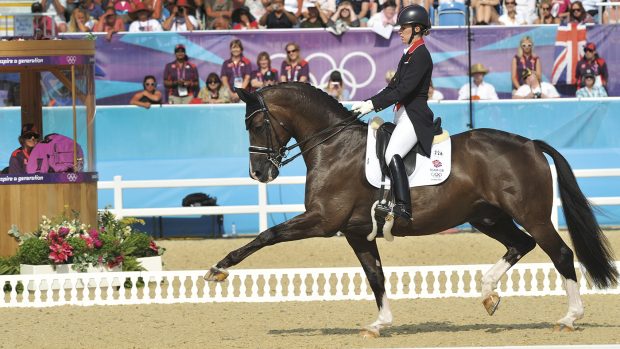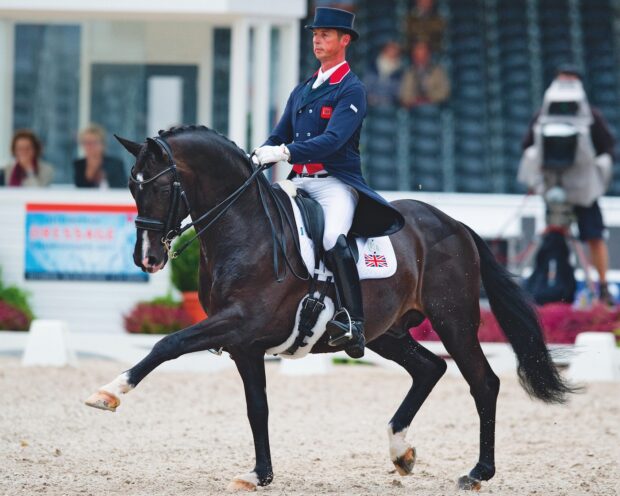Rio might have been top of our agenda in 2016. But we take a look back at the other hot topics hitting the equestrian headlines this year
A horse under the hammer
The story: Carl Hester’s London 2012 team gold medal-winning ride Uthopia was sold at public auction in May, with no reserve, as part of bankruptcy proceedings. The 15-year-old stallion was sold by Tom Keenan (Keenan Corporate Finance) and James Neill (HNH Group) who held joint ownership by virtue of their respective roles as trustees in bankruptcy over two estates — Sasha Stewart and her father Derek Harrison. Carl said he was “appalled”, and no longer had any claim to part-ownership of the horse. He was sold for £165,000 by Wilsons Auctions, and although the buyer’s name has not been made public, Carl confirmed a month later that the horse would stay at his Gloucestershire base.
What happens next? Uthopia is to stand at stud and it has been rumoured that a return to competition may also be on the cards…
Riders’ weight
The story: when the Great Yorkshire Show (GYS) asked riders thought to be too heavy for their horses or ponies to dismount in July, it sparked debate across the equestrian industry. But the British Equestrian Federation, World Horse Welfare and interested parties, such as member bodies from different disciplines, had been discussing the issue and how to combat it, since autumn 2015. Since the GYS’s move, Horse of the Year Show also told competitors at this year’s event that the suitability of their weight for their mounts would be assessed, while last month Retraining of Racehorses announced it would disqualify any rider at its shows who was more than 17% of their mount’s weight.
What happens next? The Animal Health Trust has proposed a study aimed at discovering the ideal maximum rider-to-horse weight ratio. But as there are so many other variables to take into account — such as rider and horse fitness and the horse’s own weight and condition — this issue looks likely to be at the forefront of discussions for some time.
A true inspiration
The story: talented young event rider Hannah Francis inspired people across the equestrian world with her courage and good humour as she vowed to #kickcancersbutt. While she was suffering from bone cancer, Hannah wrote a blog from the viewpoint of her cuddly toy Willberry Wonder Pony, and set up her own charity named after him, the aim of which is to fund bone cancer research and grant horsey wishes to those with serious illnesses. Since her death aged 18 on 1 August, Hannah’s parents have collected the Horse & Hound inspiration award and the Animal Health Trust’s voluntary service award on their daughter’s behalf, while Hannah was also shortlisted for the Against all Odds category of the FEI awards last month.
What happens next? Hannah continues to inspire, as riders raise money to carry on her work through her charity. Among these are the “Wobbleberries”, a group of riders aiming to complete their first British Eventing competition in her memory.
Eventing safety
The story: safety of horse and rider in eventing is an evergreen topic, but it was brought back into the spotlight this year by a series of deaths. Olivia Inglis, 17, died from injuries sustained in a fall in a national two-star competition at Scone Horse Trials, Australia, on 6 March. Caitlyn Fischer, 19, suffered fatal injuries in the one-star at the Sydney International Horse Trials on 30 April. Philippa Humphreys, 33, was fatally injured in a fall on the CCI3* cross-country course at the Jersey Fresh International Three-Day Event in New Jersey, United States, on 14 May. Nikita Sotskov died after a fall at the Ratomka Horse Trials, Belarus, on 10 September. Research continues into all aspects of the sport’s safety around the world, while the FEI has set up an eventing risk management steering group, which held its first meeting in October and is looking into minimising risk in the sport.
What happens next? The group will look into fence design and ways of reducing falls as part of its efforts, with the aim of working together across the world.
Like this? You might also enjoy reading these:
Valegro tribute: ‘I’ve never seen a horse like him — he is the greatest’
10 dream days hunting (start making your wish list…)
Endurance
The story: in February, thousands of people signed a petition demanding the 2016 endurance World Championships were removed from Dubai over welfare concerns. “Strong” new measures introduced in the United Arab Emirates failed to reduce speeds in the first two rides to apply them, however, and in April, the FEI did remove the championships from Dubai, stating that no-more FEI events would be sanctioned in Dubai for an indefinite period, as “the UAE federation is not currently in a position to guarantee that horse welfare would be fully protected at an FEI World Endurance Championship”.
The competition was held in Samorin, Slovakia, instead, in September. But there was more controversy as Ajayeb, ridden by UAE rider Sheikh Rashid Dalmook Al Maktoum, suffered a leg injury that meant she had to be put down. The FEI then launched an investigation into whether the mare’s body was diverted to a livestock crematorium instead of being taken directly to a laboratory for her compulsory autopsy.
What happens next? Sheikh Sultan bin Zayed al Nahyan spoke at the World Horse Welfare conference last month on his efforts to combat the “drive to win at all costs”. His Bou Thib rules, which set lower maximum speeds and heart rates, are a success, he told the conference, and are being copied by ride organisers across the world.
Agenda 2020
The story: the FEI and riders have been at loggerheads over planned changes to the Olympic format. Eventers and showjumpers have spoken out against proposals to reduce teams to three combinations with no drop score, citing fears for horse welfare among their concerns. The FEI’s aim is to ensure equestrian sports remain in the Olympics, and to allow more countries to take part. But some riders are concerned that involving combinations that are incapable of performing at the highest level would have negative implications.
The idea was proposed at the FEI general assembly last November, when there was opposition from nations including Britain and Germany. But at the 2016 assembly, in Tokyo last month, the proposals were voted through. Of the 107 national federations represented at the conference, only 11 — including Germany, France and New Zealand — voted against the change. A number of other modifications were also agreed regarding the different disciplines’ Olympic formats, including dressage medals being decided purely on the results of the grand prix special, as opposed to the current combination of grand prix and grand prix special, and a new heat system to qualify for the special. In eventing, teams will be able to substitute the reserve combination once competition is started, but will incur 100 penalties for doing so.
What happens next? The format change is subject to final approval by the International Olympic Committee next year.
This article was first published in 15 December 2016 issue of Horse & Hound magazine




